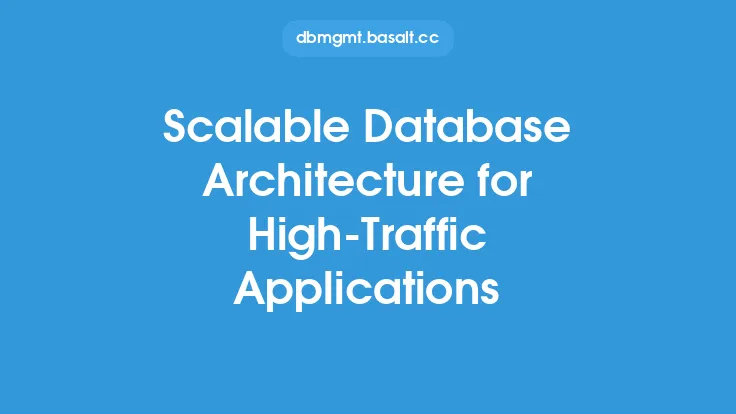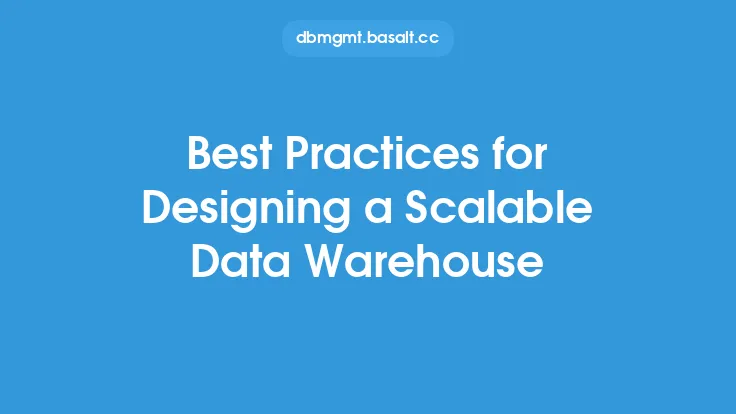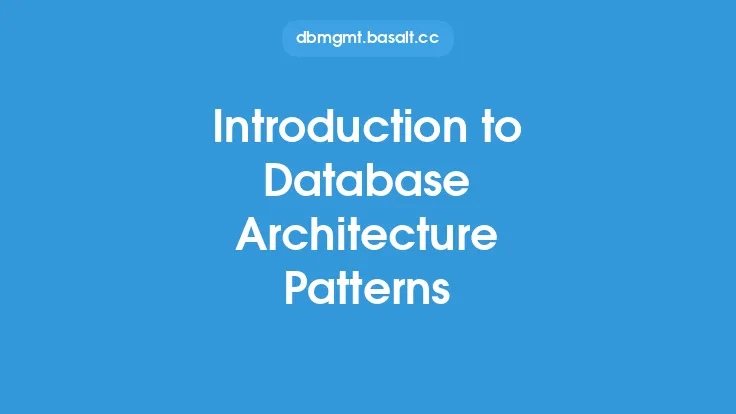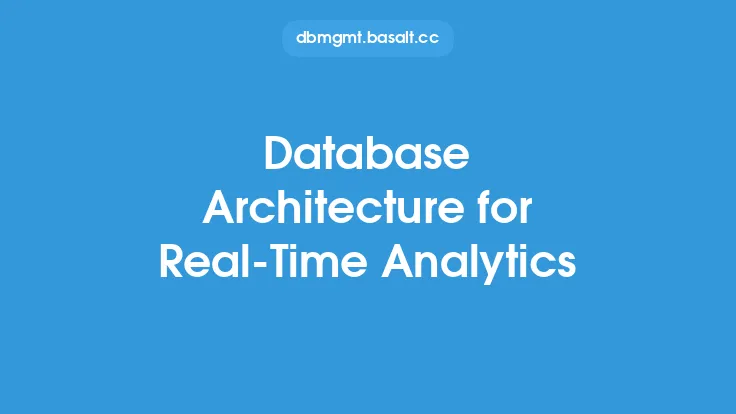Designing a scalable database architecture is crucial for any organization that relies on data to drive its operations. A well-designed database architecture can handle increasing amounts of data and user traffic, while also providing high performance, availability, and reliability. In this article, we will explore the key principles and techniques for designing a scalable database architecture.
Introduction to Scalability
Scalability is the ability of a system to handle increased load and usage without compromising performance. In the context of database architecture, scalability refers to the ability of the database to handle increasing amounts of data, user traffic, and queries without a significant decrease in performance. A scalable database architecture should be able to handle the following:
- Increased data volume: The database should be able to store and manage large amounts of data without a significant decrease in performance.
- Increased user traffic: The database should be able to handle a large number of concurrent users and queries without a significant decrease in performance.
- Increased query complexity: The database should be able to handle complex queries and transactions without a significant decrease in performance.
Key Principles of Scalable Database Architecture
There are several key principles that should be considered when designing a scalable database architecture. These include:
- Horizontal partitioning: Horizontal partitioning involves dividing the data into smaller, more manageable pieces, and storing each piece on a separate server or node. This allows the database to scale horizontally, adding more nodes as needed to handle increased load.
- Vertical partitioning: Vertical partitioning involves dividing the data into smaller, more manageable pieces, and storing each piece on a separate server or node, based on the type of data. For example, a database might be partitioned into separate servers for customer data, order data, and product data.
- Data replication: Data replication involves duplicating data across multiple servers or nodes, to improve availability and performance. This allows the database to continue operating even if one or more nodes fail.
- Load balancing: Load balancing involves distributing incoming traffic across multiple servers or nodes, to improve performance and availability. This allows the database to handle increased load without a significant decrease in performance.
- Caching: Caching involves storing frequently accessed data in memory, to improve performance. This allows the database to reduce the number of disk I/O operations, and improve query performance.
Database Design Considerations
When designing a scalable database architecture, there are several key considerations that should be taken into account. These include:
- Data model: The data model should be designed to support scalability, with a focus on simplicity, flexibility, and ease of maintenance. A well-designed data model should be able to handle increasing amounts of data, and support complex queries and transactions.
- Indexing: Indexing involves creating data structures that improve query performance, by allowing the database to quickly locate and retrieve data. A well-designed indexing strategy should be able to handle increasing amounts of data, and support complex queries and transactions.
- Query optimization: Query optimization involves optimizing database queries to improve performance, by reducing the number of disk I/O operations, and improving query execution plans. A well-designed query optimization strategy should be able to handle increasing amounts of data, and support complex queries and transactions.
- Transaction management: Transaction management involves managing database transactions, to ensure data consistency and integrity. A well-designed transaction management strategy should be able to handle increasing amounts of data, and support complex queries and transactions.
Scalable Database Architecture Patterns
There are several scalable database architecture patterns that can be used to design a scalable database architecture. These include:
- Master-slave replication: Master-slave replication involves duplicating data across multiple servers or nodes, with one server or node acting as the master, and the others acting as slaves. This allows the database to improve availability and performance, by allowing reads to be handled by the slave nodes.
- Peer-to-peer replication: Peer-to-peer replication involves duplicating data across multiple servers or nodes, with each server or node acting as a peer. This allows the database to improve availability and performance, by allowing reads and writes to be handled by any node.
- Sharding: Sharding involves dividing the data into smaller, more manageable pieces, and storing each piece on a separate server or node. This allows the database to scale horizontally, adding more nodes as needed to handle increased load.
- Data warehousing: Data warehousing involves storing data in a centralized repository, to support business intelligence and analytics. This allows the database to improve performance, by allowing complex queries and transactions to be handled by a separate system.
Technologies for Scalable Database Architecture
There are several technologies that can be used to design a scalable database architecture. These include:
- Relational databases: Relational databases, such as MySQL and PostgreSQL, are well-suited for scalable database architecture, due to their support for horizontal partitioning, data replication, and load balancing.
- NoSQL databases: NoSQL databases, such as MongoDB and Cassandra, are well-suited for scalable database architecture, due to their support for horizontal partitioning, data replication, and load balancing.
- Cloud-based databases: Cloud-based databases, such as Amazon Aurora and Google Cloud SQL, are well-suited for scalable database architecture, due to their support for horizontal partitioning, data replication, and load balancing.
- Distributed databases: Distributed databases, such as Apache HBase and Apache Cassandra, are well-suited for scalable database architecture, due to their support for horizontal partitioning, data replication, and load balancing.
Best Practices for Scalable Database Architecture
There are several best practices that should be followed when designing a scalable database architecture. These include:
- Monitor and analyze performance: Monitor and analyze database performance, to identify bottlenecks and areas for improvement.
- Test and validate: Test and validate the database architecture, to ensure it can handle increased load and usage.
- Use automation: Use automation, such as scripting and automation tools, to simplify database management and maintenance.
- Use cloud-based services: Use cloud-based services, such as cloud-based databases and load balancing, to improve scalability and availability.
- Use data replication: Use data replication, such as master-slave replication and peer-to-peer replication, to improve availability and performance.
Conclusion
Designing a scalable database architecture is crucial for any organization that relies on data to drive its operations. By following the key principles and techniques outlined in this article, organizations can design a scalable database architecture that can handle increasing amounts of data and user traffic, while also providing high performance, availability, and reliability. Remember to consider the key principles of scalability, including horizontal partitioning, data replication, and load balancing, and to use technologies such as relational databases, NoSQL databases, and cloud-based databases to support scalable database architecture. By following best practices, such as monitoring and analyzing performance, testing and validating, and using automation, organizations can ensure their database architecture is scalable, available, and reliable.





